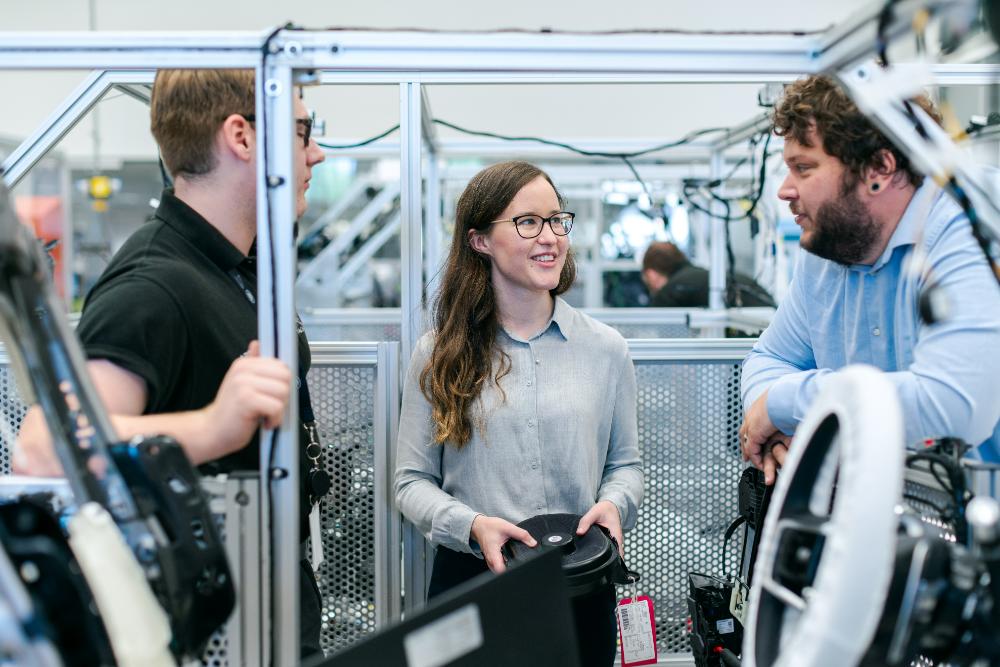- Plan an efficient facility layout, considering the flow of materials, space usage, and necessary functional areas.
- Prioritize safety through implementing safety features and conducting regular inspections and staff training.
- Utilize sustainable construction materials to reduce environmental impact and potentially lower operational costs.
- Invest in high-quality industrial equipment to avoid breakdowns, increase efficiency, and improve product quality.
- Future-proof your facility by planning for growth and investing in innovative technologies.
Industrial businesses require specialized facilities to conduct their operations effectively. The planning and building stages of an industrial business space can be daunting, but the result is well worth the effort. A well-built industrial facility promotes safety, efficiency, and productivity. This blog post will share tips for building an efficient industrial business space. These tips will help businesses optimize their operations and minimize costs while maintaining a safer, more efficient work environment.
Consider the Layout of the Facility:
The layout of an industrial business space can significantly affect its overall efficiency. When planning the layout of your industrial facility, consider the following factors:
Clear and direct flow of materials and products:
A well-designed layout should allow materials and products to move through the facilityin a streamlined manner. This will minimize the time it takes for goods to reach their destination, reducing production time and costs.
Efficient use of space:
Industrial facilities often require large amounts of space, but it is important to ensure that every inch is utilized effectively. Avoid wasted space and plan for future expansion if necessary. You can also consider utilizing vertical space by incorporating mezzanine levels or high shelving.
Separation of areas:
Most industrial facilities require separate areas for different functions such as manufacturing, storage, and loading/unloading. Planning for these areas to be separated efficiently to prevent bottlenecks and maximize productivity is essential. For example, the loading and unloading area should be close to the storage area for easier access.
Pipes, ducts, and conduits:
Industrial facilities often require a network of pipes, ducts, and conduits for various purposes, such as heating, cooling, and electricity. When planning the layout, make sure to accommodate these components to minimize interference with other operations. You can also opt for intelligent pigging solutions that use smart devices to inspect and clean pipelines, reducing maintenance costs and downtime.

Prioritize Safety:
Safety should always be a top priority when planning and building an industrial facility. Consider implementing safety features such as proper lighting, ventilation, and fire prevention systems. Regular inspections and maintenance of equipment and facility infrastructure should also be scheduled. Additionally, training and education programs can be implemented to ensure that your workforce is knowledgeable and able to handle emergencies.
Use Sustainable Construction Materials:
Using sustainable construction materials when building your industrial facility reduces your overall environmental impact and can help minimize operational costs over time. Materials such as high-efficiency insulation and energy-efficient lighting can help to reduce energy consumption. Some sustainable materials, like recycled steel, can also be more cost-effective in the long run.
Try looking into green building certifications for additional guidance on sustainable construction practices. This benefits the environment and can positively impact your company’s image and reputation. You can also consider implementing green initiatives within the facility, such as water and energy conservation programs.

Invest in Quality Industrial Equipment:
Investing in quality industrial machinery and equipment can significantly enhance your business operations. High-quality machinery reduces the likelihood of costly equipment breakdowns, improves efficiency, and enhances product quality. Investing in machinery with higher technology integration can contribute to a smoother workflow, thus increasing overall productivity. You can also consider leasing equipment instead of buying to reduce upfront costs. This option allows access to the latest and most advanced equipment without a large financial commitment.
Consider the Future of Your Business:
Finally, it is essential to consider the future of your business when planning and building your industrial facility. This means planning for growth, investing in technologies that support innovation, and developing spaces that can be adapted for future use. Future-proofing your industrial facility ensures your company’s longevity and positions it to take advantage of new opportunities. Many businesses overlook this crucial step, resulting in costly renovations or even relocation down the line. If you plan for the future from the start, you can save time and money in the long run.
Building an efficient industrial business space is a significant undertaking, but proper planning and execution can positively impact your business’s overall operations and success. These tips for building an efficient industrial facility can help you create a safe, productive, and sustainable workspace that sets your business up for long-term success. Remember to constantly evaluate and update your facility to adapt to changing needs and technological advancements. With these tips in mind, your industrial facility will be well-equipped to handle any challenges that come its way.





